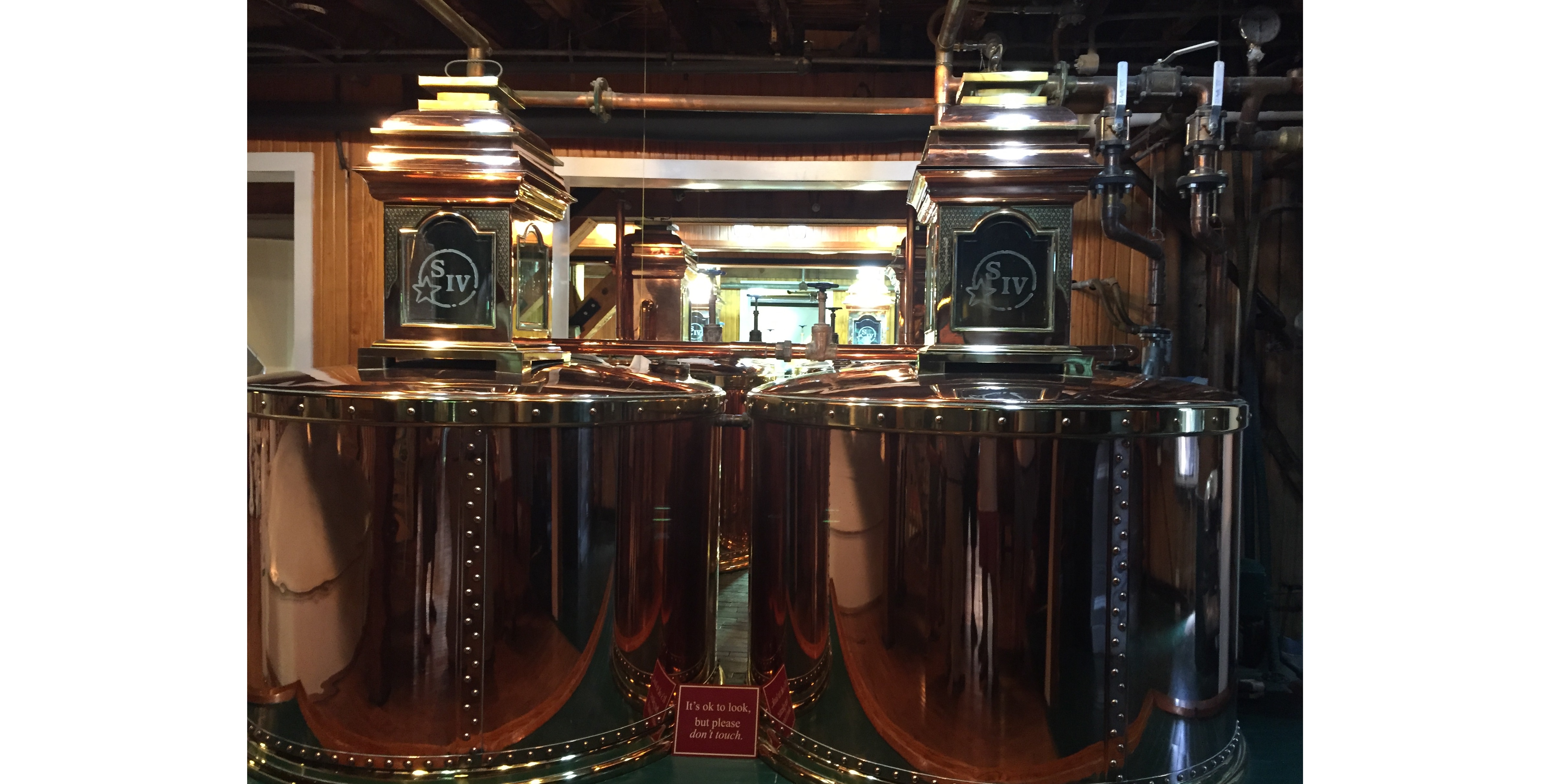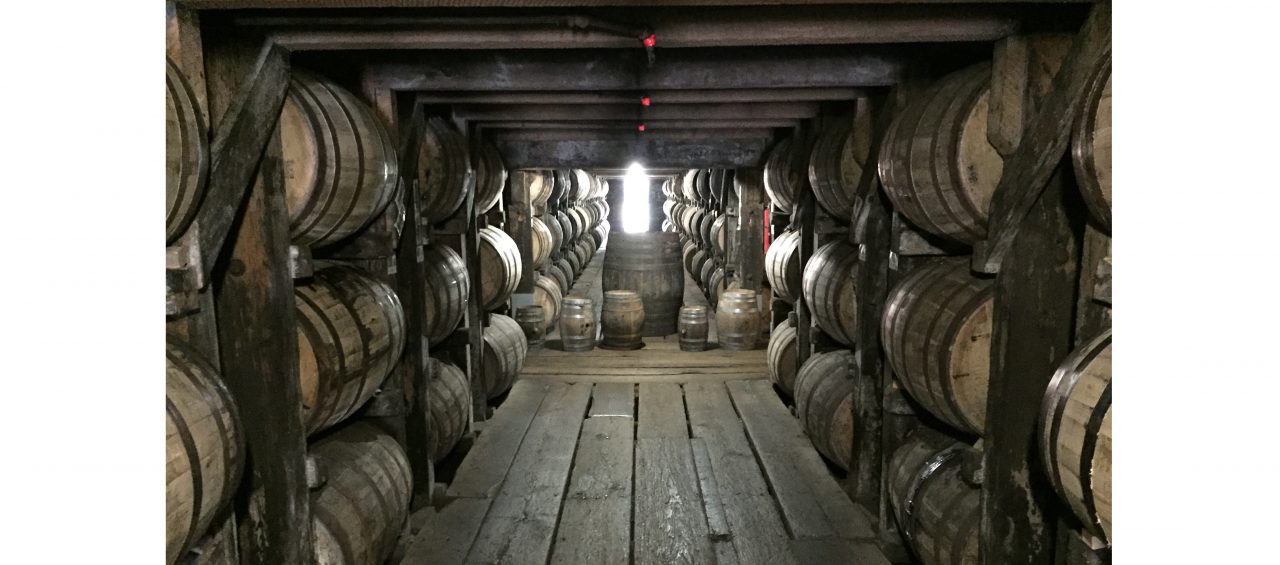What Affects A Bourbon’s Taste?
With fall bourbon season over it’s time to get back to what I love writing about on Bourbonr. The nerdiness behind bourbon. Chasing limited editions is fun. But, I’d rather help Bourbonr’s expand their knowledge of bourbon. That’s what today’s post is about. We’re looking at the bourbon process and how the different processes affect taste.
Even with large improvements in automation bourbon flavor is still more of an art than a science. This is why Master Distillers spend a lot of time taste testing different barrels (tough job!). Here is how the following processes affect the taste of bourbon. This is a look from 10,000 feet. Each segment could fill an encyclopedia with information (Here’s 117 pages about aging). This post is cliff notes for what generates bourbon’s flavor.

Aging 50% – 80% – Bourbon aging it split into two categories, time and place. How long was the bourbon aged? Where was it aged? That’s geographic and warehouse location. Some Master Distillers contend that aging contributes up to 80% of bourbon’s flavor. Bourbon that’s aged in Kentucky ages much different than bourbon in Texas. Bourbon aged at the top of a warehouse ages different than the same bourbon aged on the ground floor.
Distilleries have to consider all these factors when creating flavor profiles. Read “Bourbon Aging Explained” for a more in-depth review of bourbon aging.
Mash Bill 15% – 25% – The grains used to create a bourbon affect the taste. We all know bourbon must be at lease 51% corn but what about the other 49%. Did they use rye or wheat? How much barley is in the mash bill? Read “What Is A Mash Bill” for a more in-depth review of bourbon mash bills.
Distillation 10% – 15% – Alcohol boils at 173 degrees while water boils at 212 degrees. This difference makes distilling possible. The alcohol rises and is collected. Different stills change the final flavor as well. Does the distillery use a column still or a pot still? Do they distill the mash more than once? Finally, at what proof does the white dog come off of the still? The higher the proof the less flavor compounds are left in the spirit.

Yeast 5% – 10% – Yeast is a single cell fungi. The beauty of yeast is they convert sugar to alcohol. Yeast is added to the mash bill that has been cooked with water to begin the fermentation process. There are hundreds (if not more) strains of yeast. Every distillery has their own “proprietary” yeast strain that adds extra, different, flavors. Four Roses uses five different yeast strains. Look for two Four Roses private picks from the same mash bill but different yeast. Taste them side-by-side to get a better understanding of yeasts role in flavor.
Other 5% – 10% – There are a lot of little things that can affect the taste of a bourbon. Some examples would be barrel entry proof, filtering process, proof. The “other” parts are important. They can move a good bourbon to a great bourbon. Some people despise the filtering process but it can improve certain bourbons. For instance, most older (10-years+) need chill filtering to improve taste.
Bourbonr Homework: Taste two bourbons side-by-side from the same distillery and mash bill. I.e. Eagle Rare and Buffalo Trace or Jim Beam Black and Knob Creek.

28 comments
Nice read Blake! It’s a nice reminder because, sometimes we forget all the stuff behind a particular bourbon and more focused on all the unicorn stuff!
Hi Blake,
Great article. I have been a bourbon drinker for almost 40 years. I don’t get hunting for unicorns. I am more into trying things I have not taste before and if like it I will go back and pick up a few bottles. I’ve had Pappy(all varieties), even than Hirsch 16 year old. All years ago when everything was less then $100. I will never pay $300 for a bourbon. And up here in NY that $300 of Pappy’s is $2000! I look for something new, that I have not tried before. That is where the fun is for me.
Joe
I’ve seen pappy sell for $5k a bottle in North Carolina. I just paid $500 for south Carolina bourbon. It happens. Work harder and you won’t care.
Why Would you pay $500 for SC Bourbon? Charity? Expand please.
Seriously I can’t tell if he meant bought in SC or buying a SC bourbon, because if it is the latter it must be for charity because there isn’t a single high end quality SC bourbon
What is interesting is that the char on the barrel is never mentioned. Is it a deep char or a light char,is it a#3 character or #4 char. I truly believe that the char of the barrel and the time spent in the barrel are the most important. After that, it is the mash bill that influences the flavors. Master distillers say the limestone water. Maker’s Mark say they have the best water and that is why they have the best bourbon.
Agreed. You do a great job talking bourbon
Please get rid of the obnoxious “sharing” toolbar on the left side. Covers up part of every page and the readers have to duck and dodge around it to read your content-drives me nuts! Most of us are smart enough to share something if we deem it worthy and don’t want that crap always “in you face”. I enjoy reading your content but the enjoyment gets canceled out by the constant annoyance of that damn content-hiding blob
Regards,
Jim
What device are you reading on? Ipads seem to be the only one with an issue. But, there are two arrows at the bottom of the box that allow you to hide it. That should solve your issues
I get it on Chrome browser if I don’t have the window maximized.
You have to swipe the blob to the right before the two arrows appear at the bottom. Tap the arrows and it’s gone.
That thing is a pain! On my iPhone there are no arrows and swiping does nothing.
Blake – great article. Really appreciate the insight. It’s nice to “get back to basics” and remember what bourbon is really about.
And that is why we subscribe. Informative. Inspiring.
Actually, what I find most that affect’s Bourbons(!) taste in general is a Facebook group moderator w/o a sense of humor!! Right Blake??!!
I have no problem with funny jokes. You were booted for using a fake name. Too much trouble when people are using fake profiles
Actually, NO! There, you’re WRONG! Richard Handler… Real name (fake occupation, I’ll give you that. But I do enjoy the “ball busting” from the group about it – when you grow up w/ a name like this, you grow a thick skin early). I keep my “Facebook” life separate from my friends. I have friends in real life. I don’t need them “online”- I’m 53 years old for F’s sake!. I follow things on Facebook that I have interest in. If I change my occupation, will that resolve the “issue”?
Well, I stand corrected. I’m sure you can understand why I thought it was a fake profile. But, I removed the block so you’re free to jump back in. Thanks
Thank you Sir! I understand & appreciate it.
I always hated homework in school. But your homework I can deal with. I have each of those bottles at home. I will get right to it!
This is the kind of information that compels me to continue trying new stuff. The basic rules are the same for all bourbon yet there is such great diversity among them. I’m surprised though that the yeast has such a relatively small affect, yet remains “proprietary.” And the aging effects boggle the mind. Trace uses brick rick houses only 4 stories high, where Beam uses 9-story steel ones. Really curious to know what’s taking place in each of those barrels based on that alone. Thanks Blake.
Blake, this is a good post for beginners and well written. Also, I had sent you an email several months back (given your website indicates you like and welcome bourbon-related emails), and it went totally ignored. I was hoping to start a small discussion – maybe to be opened to others – about bourbons that are finished in barrels that previously held wine or some other flavorful liquor.
In essence, by law, you cannot add flavoring to bourbon and still call it bourbon. But, when you add bourbon to a barrel that contained say wine, the wine remnants that pervade and remain in the oak are what blend with the bourbon to influence the flavor profile – and yet this can still legally be called bourbon. Kind of like if I pour a dash of wine into a bottle of bourbon, I can no longer label it as “bourbon,” but if I pour bourbon into a bottle that has a very wet interior because I just poured wine out of that bottle, voila! I can label it as bourbon. Does this make sense to anyone? Thanks.
https://www.law.cornell.edu/cfr/text/27/5.22
Legal standard for “bourbon” requires aging in new charred oak barrels. A whisky aged in barrels formerly containing some other product would be classified as “whisky distilled from bourbon mash.”
Interesting article, as usual… 🙂
Hi: Does yeast remain in the finished product? I’ve heard it remains long enough to ferment but is filtered and destroyed by the time it’s bottled. Is that true?
The mash bill is fermented with yeast and then distilled twice. Probably not much yeast is left after distilling
“Bourbon that’s aged in Kentucky ages much different than bourbon in Texas. Bourbon aged at the top of a warehouse ages different than the same bourbon aged on the ground floor.”
So what you’re saying is that temperature makes a difference? Or are we delving into astrology here, where we don’t really have to give specifics, and we just pretend everything is magic?
To me, the biggest thing that influences bourbon’s flavor is me. Every time I pick up a bottle, it tastes different. I don’t know why. Something to do with what I’ve eaten, how thirsty I am — who the hell knows? I wish I did, but I don’t.
Even my favorites sometimes taste off to me. Then I pick up the same bottle the next day, and it’s great once again.
Must be that magic.